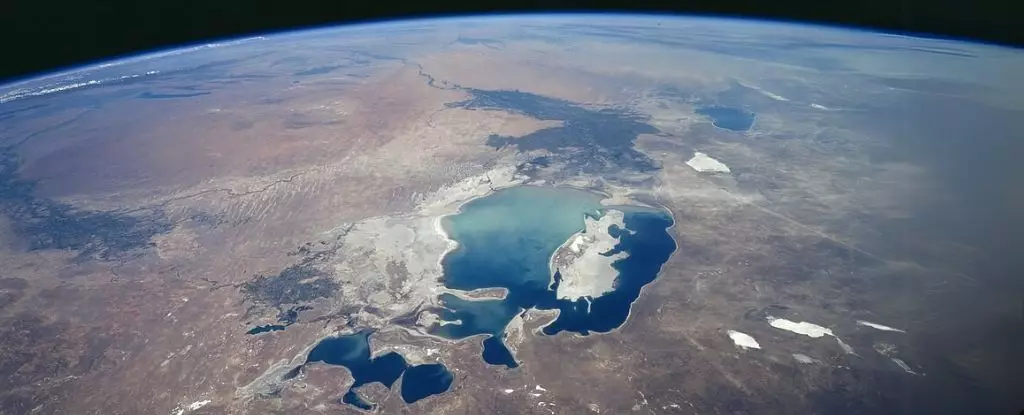Once widely celebrated as the fourth-largest lake on the planet, the Aral Sea was the pride of Central Asia, straddling the borders of Uzbekistan and Kazakhstan. This vast body of water covered an impressive area of 68,000 square kilometers (about 26,000 square miles). However, the middle of the 20th century marked the beginning of an environmental tragedy of monumental proportions. By 2015, the once-thriving sea had dwindled to a mere fraction of its former self, reflecting not only a severe ecological crisis but also a sobering lesson in the consequences of human intervention in natural systems. With only about 8,000 square kilometers of water remaining, what was once a vibrant waterway has transformed into the Aralkum Desert, highlighting mankind’s devastating impact on Earth’s delicate ecosystems.
The transformation of the Aral Sea is deemed one of the most significant environmental disasters of our time. Experts like Ibrahim Thiaw from the United Nations Convention to Combat Desertification have articulated the severity of the situation, emphasizing that this is more than just a regional issue; it stands as a global warning. Between 1984 and 2015, the atmospheric dust generated from the exposed lakebed nearly doubled, escalating from 14 million to an alarming 27 million metric tons. This increase has had dire repercussions for air quality, affecting not only the immediate vicinity but even cities situated up to 800 kilometers (500 miles) away.
Moreover, the consequences of this dust storm travel even further, aggravating climate conditions that contribute to glacial melt and, consequently, worsening the ongoing water crisis within the region. Dust laced with toxic salts and chemical runoff—including remnants from Soviet-era weapons testing—spreads through storms, contaminating local crops and drinking water. This points to a broader issue: the dire need for sustainable environmental practices and a systematic overhaul of agricultural methods.
The decline of the Aral Sea primarily stemmed from large-scale irrigation efforts initiated in the 1960s by the Soviet government. The Amu Darya and Syr Darya rivers, which formerly fed the lake, were diverted to service expansive agricultural projects, particularly those focused on cotton cultivation. This drastic reallocation of water resources, aimed at increasing agricultural yield, only served to exacerbate the shrinking of the Aral Sea. By the early 1990s, the lake was irreversibly split into isolated remnants, leading to a dramatic rise in salinity levels that surpassed even those of the ocean, fundamentally altering the local ecosystem and driving native species to extinction.
As the aquatic life diminished, so did the livelihoods of local fishermen, leaving behind rusted boats and barren shorelines where once vibrant communities flourished. The acute health problems arising from dust exposure underscore the dire need for immediate action. Studies indicate correlations between this exposure and a rise in congenital defects and other health complications among the local population.
In light of this ecological obliteration, regional governments are now scrambling to mitigate the damage. Initiatives include efforts to re-vegetate the desolate former seabed, as scientists explore plant species resilient enough to endure the high salinity and aridity of the land. Collaborative projects funded by international organizations like the European Union and USAID aim to support these restoration efforts. However, the future of this venture remains uncertain, indicating the complexities and challenges of environmental recovery.
The stark reality of the Aral Sea crisis extends beyond its borders, serving as a potent reminder to the global community. Lakes and rivers worldwide are witnessing similar fates, fueled by industrial agriculture and shifting climatic conditions. Regions in Africa, the Middle East, Europe, Australia, and the United States face water depletion and ecological degradation reminiscent of the Aral Sea disaster. Without serious attention to local environments and responsible water management, the world risks repeating these catastrophic mistakes.
Understanding the circumstances surrounding the decline of the Aral Sea isn’t merely an academic exercise; it is a clarion call to prioritize sustainable practices that respect the intricate balance of local ecosystems. If we fail to learn from this unfolding tragedy, we may find ourselves grappling with the consequences of environmental neglect on an even larger scale in the near future.


Leave a Reply